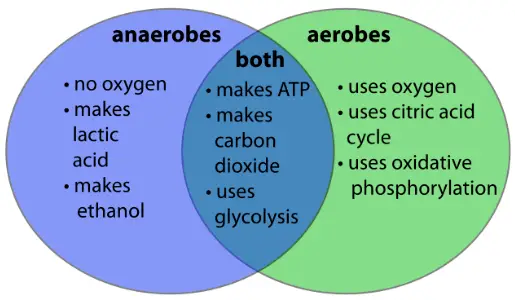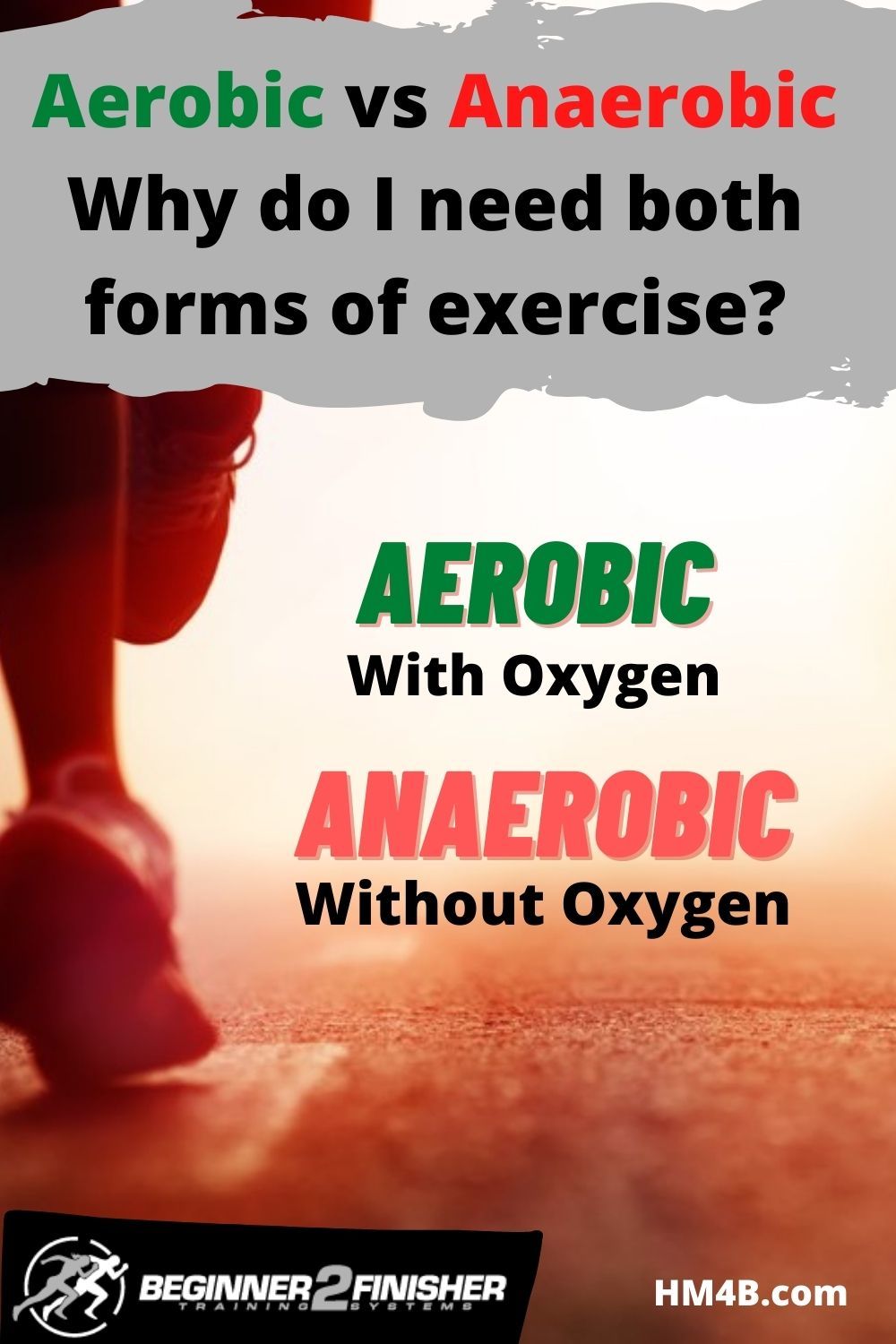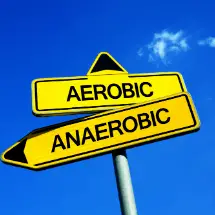Long-distance racing, especially a marathon, requires lots of practice runs as you need to gradually increase your distance and decrease your time. Aerobic exercise is best but anaerobic can also play an important role.
What are Aerobic and Anaerobic Exercises?
Exercise constitutes anything that raises our heart rate, makes you break a sweat, and gets you out of breath. This can be done either aerobically or anaerobically, although for optimum fitness it is best to do a combination of the two.
So any exercise you do will fall into one of these two classifications and will improve either your aerobic or anaerobic capabilities by gradually increasing your fitness thresholds. We should all be doing these exercises on a regular basis to ensure we maintain a good level of general health and fitness.

Differences Between Aerobic and Anaerobic
The basic difference between aerobic and anaerobic is that aerobic requires a constant supply of oxygen, whereas anaerobic can be performed in short bursts without using oxygen. No, this doesn’t mean jumping rope whilst holding your breath!
When you do any form of cardiovascular exercise you are using your aerobic system. Whether it be a gentle walk or a faster run, you require a constant supply of oxygen to keep going. However, if you decided to up your run to a full-on sprint, your body would then be working anaerobically.
So we now know that aerobic exercise means that it uses oxygen as fuel, but what exactly does our body use when oxygen alone can no longer sustain the exercise? The anaerobic system uses the following two fuels:
Lactic Acid:
Lactic acid energy can only use carbohydrates as fuel. These are broken down using a system called glycolysis which takes glycogen from the liver and glucose from the blood, the end result of which is lactic acid. The lactic acid system kicks in when you are working at approx. 85-95% of your maximum heart rate and for a period of 30-60 seconds.
So when you initially start running, for example, this is the system you will use until your aerobic system kicks in. That is why it is important to warm up before you start training to make sure your aerobic system starts efficiently.
It was originally thought that it was lactic acid that produced the dreaded muscle soreness experienced after a hard workout, but there are more studies completed in recent years that indicate this is not the case at all. As lactic acid will immediately start to clear from your muscles as soon as you reduce your exercise intensity, it cannot be the cause of soreness, sometimes felt for several days, after a workout.
Sure lactic acid is responsible for giving you that intense burning feeling during your workout, but the soreness experienced afterward results from the microscopic tears in the muscle fibers from all the hard graft you put them through!
Tempo runs help improve your body’s ability to run for longer periods of time without building up more lactic acid than your body is removing – referred to as Lactate Threshold. Once your body starts producing more lactic acid build-up than it can remove, your performance nose-dives and the wheels come off.

Creatine Phosphate:
This is the ultimate in va-va-vroom as it will be released when you are working all-out at maximum intensity, and have exhausted your lactic acid reserves. This fuel system lasts for just 10 seconds max and so is useful for that final full-on sprint to get you past the finishing line, or to push your one-rep-max on the bench press!
Think of it as a sudden explosion within the body, providing that final rush of energy required to finish the job before collapsing in a heap just over the finish line, or on the floor once that 300lb squat bar is safely back in the rack!
Benefits of Aerobic Exercise
The key benefit of aerobic exercise is to keep your heart, lungs, and blood pressure super-healthy. During exercise, you are working these organs so that you start to feel your heart getting faster and your breathing getting harder. The more frequently you do this, the easier your breathing will become, and the lower your heart rate will be when you are at rest.
The heart is basically muscle, and as we know, muscles need to be worked. A good way to look at it is to think of your heart as having a certain number of heartbeats when you are born. If you are unfit, your heart will be beating too fast most of the time and using all those little heartbeats up quicker. Every time you climb the stairs, do the housework, or wash the car you feel it beating fast and hard.
Conversely, if you were to exercise regularly so that during your fast walk or run you feel your heart pounding away and your breath coming in shorter bursts, this means you are working that muscle and improving the quality of it. Therefore, when you next climb those same stairs you will find it a whole lot easier!
An unhealthy heart will result in more heartbeats being used up on a daily basis! A healthy heart uses far less. Even though a healthy heart uses a lot of heartbeats whilst exercising, the overall saving whilst performing normal day-to-day tasks far outweighs it.
So the fitter you are, the healthier your heart and lungs will be which in turn will increase your chances of a longer life!
Risks of Aerobic Exercise
If performed properly, aerobic exercise carries very few risks. Of course, if you had a pre-existing heart condition or other medical condition which carries risk, you would have to seek the correct advice and takes things very carefully, but you can still make improvements.
The other risk is when athletes push themselves excessively past their natural threshold. To be honest, most of us wouldn’t be able to do this as the body is a very clever tool. It is constantly sending signals between the brain and the body, and so would generally make us stop if things got dangerous.
But some people have the ability to ignore these signals and work through the pain, to achieve their goal. This is when exercise can become unhealthy. If you look at the Badwater Ultramarathon (aka Death Valley Run), this is a grueling 135-mile race through California’s Death Valley in temperatures up to 130F degrees! One has to ask “why”?
Personally, I think it is crazy to do something like this to your body as no one really knows the long-term effects of punishing it in this manner. Pushing your body to these extremes can give you chronic joint issues and actually cause heart problems. It is always best to monitor your heart rate and work within the correct range.
How many half marathons can I run in a year?
Benefits of Anaerobic Exercise

Anaerobic has great benefits for the body. By doing anaerobic exercise you will improve your muscles and metabolism of calories. Think of your muscles as being your metabolism. The more muscle you have, the more calories you can consume and burn. Sounds good to me!
Not only that, it means that the more anaerobic exercise you do, the more calories your body will continue to burn even after your workout has ended when you are sitting still or sleeping. So not only will you look toned and honed, you can eat more too! Sounds like a win-win to me!
Risks of Anaerobic Exercise

The main risk associated with this form of exercise is injury, especially if you are doing resistance exercises (aka weight training). As a general rule of safety, you should always learn correct techniques and start with a low weight. If you are doing 20 reps, it should start to burn on the 14th repetition. If you are doing 10 repetitions, it should start to feel pretty tough by the 6th rep.
Lots of people get addicted to exercise as it produces feel-good hormones in the body called endorphins. This can lead to overtraining, which can result in chronic fatigue, loss of strength, and injury due to not allowing the body adequate recovery time between workouts. It can also lead to an enlarged heart as remember, the heart is made of muscle too!
Examples of Aerobic and Anaerobic Exercises
Aerobic:
Walking, jogging, running, rowing, elliptical training, cycling, skipping, swimming and dancing are all types of aerobic exercise. Remember, for it to constitute exercise it has to raise your heart rate, get you breathing harder, and breaking a sweat. If these three things do not happen then you’re not working hard enough!
Anaerobic
Resistance training, power-lifting, and sprints of any description including rower, bike, jump rope and swim sprints. But remember, you have to be working all-out at 100% for a max of 10 secs for it to constitute a true sprint as this form of exercise uses the creatine phosphate system, as mentioned above.
How Often Should You Do Aerobic vs Anaerobic Exercise?
ACSM guidelines state that adults from 18-65 years old should do:
Aerobic exercise: 5 days per week for a period of 30 minutes at moderate intensity; 3 days per week at high intensity
Anaerobic exercise: a minimum of 2 days per week
| Help support me and subscribe to my YouTube channel. YouTube video - 30 ways to make your runs less painful! Coach Scott's Credentials:
|
To sign up for a FREE half marathon training schedule, log sheet, and pace predictor CLICK HERE.

Recommended gear for runners
Connect with me:
| facebook.com/BeginnerToFinisher/ |



11 thoughts on “Aerobic vs Anaerobic – Which Exercise Type For Long Distance Running?”